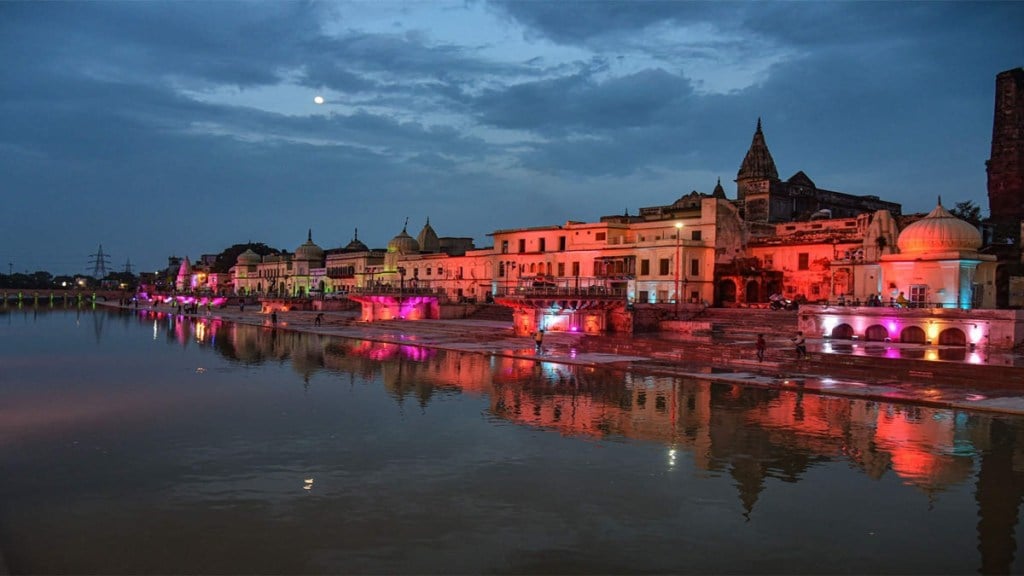As the ‘Pran Pratishtha’ (consecration) ceremony of the Ram temple in Ayodhya approaches, the Uttar Pradesh New and Renewable Energy Department (UPNEDA) is working tirelessly to transform the historic town into the state’s first solar city! According to the Solar Energy Policy, any city meeting 10 percent of its electricity demand through renewable power will be designated as a solar city. Ayodhya aims to achieve this target in its initial phase by January, according to UPNEDA officials, a PTI report said.
Prime Minister Narendra Modi, along with around 10,000 dignitaries from across the nation, is expected to grace the occasion which is scheduled for January 22, the report said. Ram Temple Construction Committee Chairperson Nripendra Mishra disclosed this significant event a fortnight ago.
Yogi’s personal interest in infrastructural development
Chief Minister Yogi Adityanath is personally overseeing the developments in Ayodhya, the PTI report said. His vision is to make Ayodhya the capital of renewable solar energy in recognition of its historical significance.
Comprehensive Solar Initiatives
According to the report, the comprehensive plan involves establishing a solar park along the Saryu River, introducing solar-powered boats, installing solar streetlights, implementing solar energy sources in public transport, offering solar-powered amenities like mobile charging points in public spaces, electrifying government buildings with solar energy, and expanding the use of solar power for domestic consumption.
This project is a key component of Uttar Pradesh’s ambitious Solar Energy Policy 2022, aiming to develop 16 municipal corporations and Noida into “solar cities.”
Ayodhya: Uttar Pradesh’s First Solar City
Ayodhya is set to become a model for the solar city initiative, with valuable insights and lessons to be applied to future solar policies in other cities, as confirmed by UPNEDA Director Anupam Shukla, reported PTI.
Phased Implementation
While the solar city project spans five years (2023-2028), the initial phase focuses on essential components such as streetlights, solar panels on government buildings, e-rickshaws with charging stations, solar trees, and solar-powered water purifiers for drinking water kiosks. UPNEDA is confident that most of these projects will be completed by January.
Key Features: Smart Streetlights, Solar Trees, and more!
A significant aspect of this transformation is the installation of a 40 MW solar plant on the banks of the Saryu, to be executed by NTPC Green, according to PTI. Ten megawatts of this project is expected to be operational by January.
Solar panels will also be installed on the rooftops of 117 government buildings, totaling 2.5 MW. This includes installations at RML Awadh University, Agriculture University, the district court, Ram Katha Museum, and various government secondary schools.
The authorities aim to establish 6 MW of solar power on 125 residential and commercial buildings.
Ayodhya has already witnessed the installation of 134 solar smart streetlights, with another 276 to be added. These innovative streetlights come with a modular design and are tailored for Ayodhya’s specific needs. Additionally, 40 solar trees with varying capacities will provide shade, LED lighting, and solar power, enhancing the city’s aesthetics and functionality.
Boost to the usage of Electric Vehicles
To encourage electric vehicles, UPNEDA is setting up two solar-powered EV charging stations. Furthermore, a six-metric-ton solar cold storage facility is being installed at the local mandi to benefit farmers.
Additional Amenities for the City
Other amenities expected by January include 150 solar high-mast lights at prominent road crossings, dedicated e-rickshaws for devotees with disabilities, solar-powered water kiosks, and solar-powered boats for devotees on the Saryu, operated by the UP State Tourism Development Corporation.

